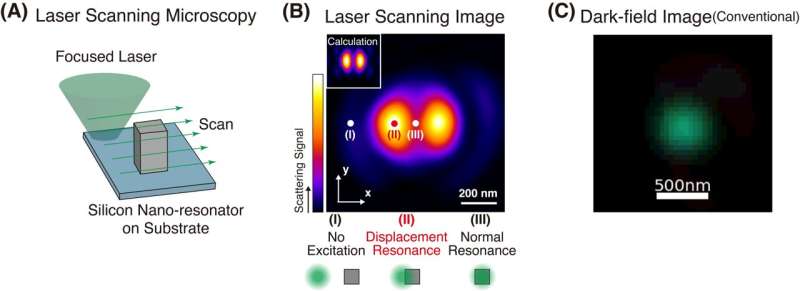This article has been reviewed according to Science X's editorial process and policies. Editors have highlighted the following attributes while ensuring the content's credibility:
fact-checked
peer-reviewed publication
trusted source
proofread
New approach overcomes long-standing limitations in optics to enhance the efficiency of Mie scattering

When you look up at the sky and see clouds of wondrous shapes, or struggle to peer through dense, hazy fog, you're seeing the results of "Mie scattering," which is what happens with light interacts with particles of a certain size. There is a growing body of research that aims to manipulate this phenomenon and make possible an array of exciting technologies.
Now, in a study recently published in Nature Communications, a multi-institutional research team including Osaka University has overcome what were thought to be fundamental limitations of how to enhance the efficiency of Mie scattering. The article is titled "Multipole engineering by displacement resonance: a new degree of freedom of Mie resonance."
Researchers in the field of meta-photonics use phenomena like Mie scattering to generate device outputs that are not possible with conventional nanomaterials, for example, low-power surveillance technology.
For many years, though, researchers have thought that Mie scattering can only be manipulated by changing the wavelength of the light or the size of the nanostructure it interacts with. Overcoming this limitation—by expanding on recent studies that focused on the alignment between the laser and the nanostructures—was the goal of the present work.
"In our approach, we misalign the incident laser," explains Yu-Lung Tang, lead author of the study. "In other words, we displace the illumination position on a nanometer scale from the center of the target nanostructure."
By doing so, the researchers found that the scattering exhibited by the silicon nanostructures depended on the extent of the misalignment of the tightly focused laser with the center of the nanostructure. A misalignment of only 100 nanometers could induce the maximized Mie resonant scattering that was previously obscured because conventional microscopy uses plane wave light illumination.
These findings could increase the efficiency of optical technologies. For example, the team's work could help researchers develop all-optical transistors, i.e., transistors that use light instead of electricity and exceed the performance of their conventional electronic counterparts.
"We're excited because we've expanded upon the fundamentals of the century-old light theory of Mie scattering," says Junichi Takahara, senior author. "Applications are wide-ranging and currently underway in our laboratory."
This work is an important step forward in our understanding of light–matter interactions. Furthermore, these results are not limited to silicon and the incident laser does not need to be a visible wavelength, encouraging exciting advancements in meta-photonics and bringing fantastical technologies like cloaking devices one step closer to reality.
More information: Yu-Lung Tang et al, Multipole engineering by displacement resonance: a new degree of freedom of Mie resonance, Nature Communications (2023). DOI: 10.1038/s41467-023-43063-y
Journal information: Nature Communications
Provided by Osaka University





















